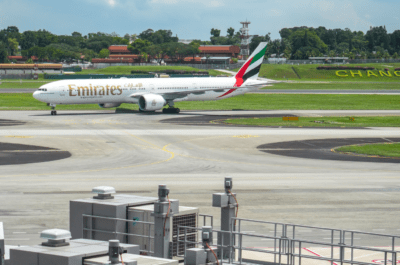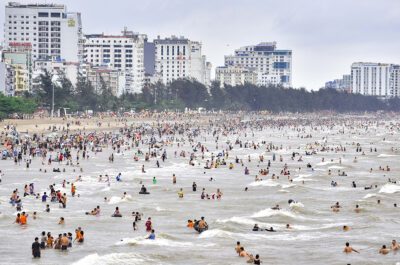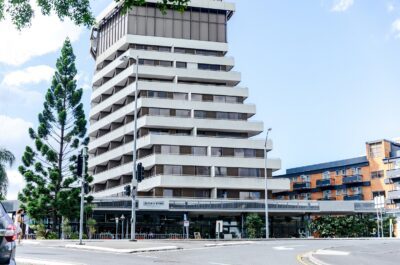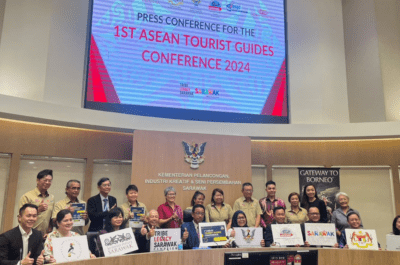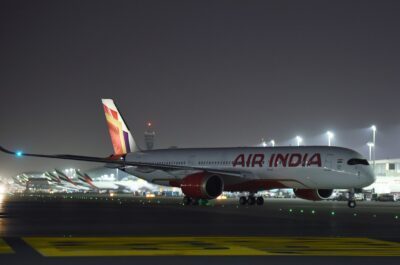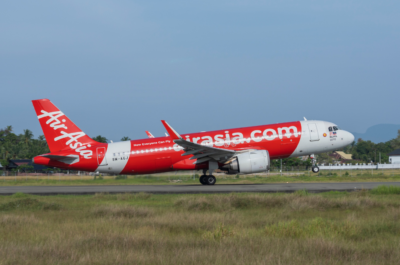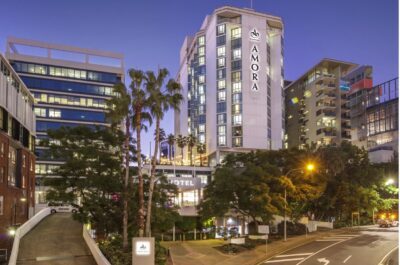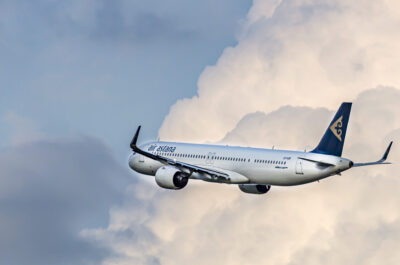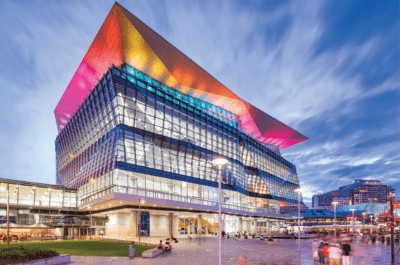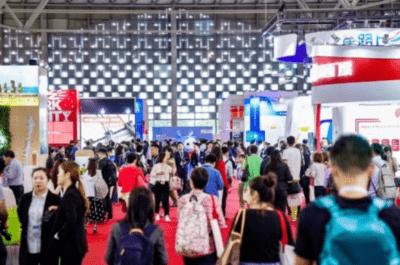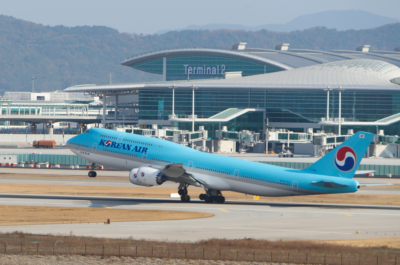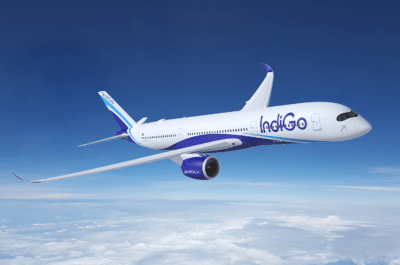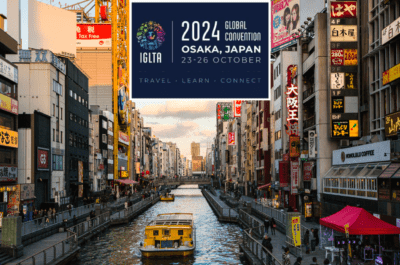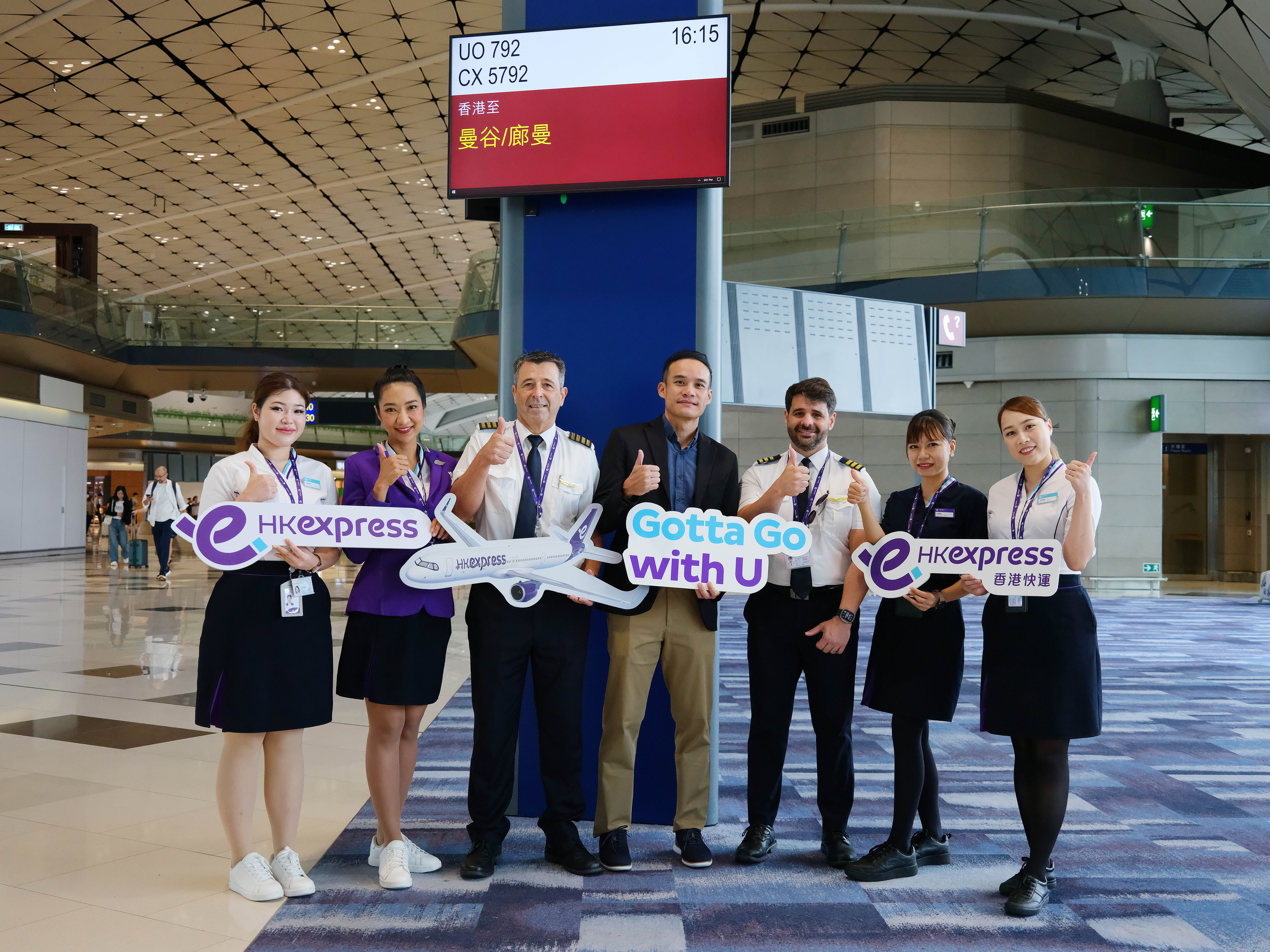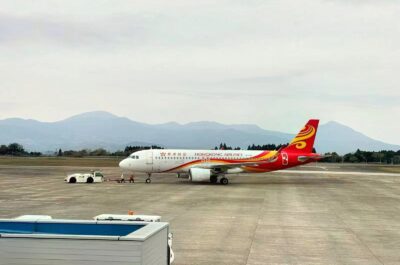…
 After years of one crisis after another, the advent of low-cost airlines (LCAs) has helped lift spirits in the Asia Pacific travel industry. Also known as no-frills or low-fare airlines, their appearance and robust growth in a number of PATA countries are set to trigger a boom in intra-regional and domestic travel.
After years of one crisis after another, the advent of low-cost airlines (LCAs) has helped lift spirits in the Asia Pacific travel industry. Also known as no-frills or low-fare airlines, their appearance and robust growth in a number of PATA countries are set to trigger a boom in intra-regional and domestic travel.
Effectively, LCAs are bringing regional air transportation down to the same level as buses and trains, and slotting themselves into the vast price gap that existed between surface and air transport. Their growth plans fit perfectly with small regional destinations` desire for more aviation access, as well as national objectives to promote greater regional economic integration via free trade, upgraded infrastructure development and decongestion in the mainstream mega-cities.
The language now used to describe the impact of LCAs on the aviation industry – such as `revolution` and `agent of change` – applies equally well to their potential impact on travel and tourism. While some say it is democratising travel by making air transport affordable for more people than ever before, others say it commoditising travel by making it no different from any other product; soon to be available in supermarkets.
According to PATA`s aviation analyst Mr. K.C. Sim, What is certain is that many will be swayed to travel more frequently and more impulsively to destinations served by LCAs. Long weekends will become gold mines on the calendar and the reasons for travel will become increasingly tied to the pursuit of individual whims and fancies. Niche segment stakeholders such as spas and golf course operators, dive site operators, shopping and culinary destinations or just simply rest-`n-relax resorts, stand to gain.
This huge surge in aviation capacity has significant implications for Asia Pacific travel, especially when China (PRC) and India are included in the equation. Student and backpacker travel will boom. Money saved on transport can then be spent on shopping, spurring sales of handicrafts and other low-cost items, the income from which generally goes directly to local communities.
At the national level, this surge of LCA-driven travel will grow the economies of Asia`s secondary cities, creating jobs and business opportunities and helping to reduce migration into the mega-cities and all the social, environmental and financial problems that often ensue from that.
More jobs will be created in aviation, ranging from cabin crew to engineering and maintenance. Over time, national tourism organisations and the private sector will be forced to take a fresh look at how and where they spend marketing dollars, leading to a potential shift away from Japan, Europe and North America towards intra-regional sources.
In Asia Pacific Aviation Outlook 2004, Centre for Asia-Pacific Aviation (CAPA) Managing Director, Mr. Peter Harbison, said: It could and should be the best year ever for aviation. The signs ahead are positive. Liberalisation of air services is accelerating rapidly and consumer sentiment is positive in most countries. Underlying economic conditions across the region are currently favourable in a way which has rarely occurred, with all countries synchronised in favourable growth patterns.
Mr. Harbison continued: In these circumstances, provided airlines manage capacity effectively, this growth should flow straight to the bottom line. It should also be good news for aircraft manufacturers, as profitability and demand coincide. Similarly, airports and the tourism industry should experience solid results. In this climate, the investment prospects for an array of airport privatisations across the region are correspondingly strong.
The potential in play
According to CAPA, there are 235 Asia Pacific cities with populations exceeding 500,000 and 130 cities of more than one million. A total of 339 regional airports are capable of accepting B737/A320 equipment yet most of these are now ignored by international connections.
As these airports start serving regional flights mounted by LCAs, the Asia Pacific region, already the largest source of visitors for its own destinations, will become an even more important source of its own arrivals. Of the more than 256 million international visitor arrivals recorded by the Asia Pacific region in 2003, more than 70% originated from within the region itself. Asia accounted for 30% of all visitor arrivals into South Asia and a dramatic 75% and 71% of all arrivals into Northeast Asia and Southeast Asia, respectively. Intra-Pacific travel accounted for 23% of all arrivals.
Domestic travel is also significant. It is estimated that, in 2003, Chinese travellers made 870 million trips valued at US$42 billion within their own boundaries while Thais are estimated to have made a total of 66 million domestic trips. By 2010, it is estimated that there will be at least 680 million Asians with discretionary income, at least some of which will be spent on travel.
Background to the boom
The boom in LCAs in the PATA region is going the same way as in North America and Europe. In the US, the aviation market was deregulated in 1978, leading to the formation of Southwest Airlines. Europe followed with its own deregulation in 1993. It took another 10 years for mindsets to change sufficiently to realise that aviation had to be nourished to facilitate economic growth in Asia Pacific, which is divided by large geographical distances and tracts of water.
LCAs also went through a learning curve. In the early days, they were ignored, rejected as being undercapitalised and referred to as fly-by-night operators with restricted route networks. It was felt that air travel was not quite affordable by the masses. They would pose no threat to the mainstream `legacy` airlines that enjoyed government protection, were the `designated` carriers in air services agreements and had priority when it came to the allocation of traffic rights. The legacy airlines also had the advantage of massive alliances and frequent flyer programmes.
But the international economic and political crises of the last few years led to vigorous cycles of discounting in the leisure travel sector, and cost-cutting and downsizing in the corporate world. Business travel was downgraded, especially on the short- and medium-haul sectors. Because the `legacy` airlines had a cost structure that could be trimmed only to a limited extent, the field was wide open for new entrants with a totally new cost-base.
Today, dozens of LCAs are flying all over the world. They include Southwest, jetBlue, ATA, Air Tran, WestJet, America West and Frontier in North America; Ryanair, easyJet and Germanwings in Europe; Cebu Pacific, Tiger Airways, Valuair, Lion Airlines, Virgin Blue, Pacific Blue, OzJet, Freedom Air, One-Two-GO, Nok Air, Air Deccan and Jetstar in the PATA region.
LCA vs. Legacy
While the tourism industry and national tourism organisations are excited by the growth prospects, the major airlines are pondering the effect of LCAs on their business models, route networks and market share. A legacy airline`s size and global alliance network are perhaps important competitive considerations on long-haul sectors but on short- and medium-haul sectors, price rather than mileage points appears to be the dominant factor.
Understandably, legacy carriers have been somewhat reluctant to accept that LCAs are viable and are set to become a permanent feature of the aviation landscape. They have often pointed to LCAs` (purported) inability to compete with them based on limited acceptance by business travellers, smaller fleet sizes, number of destinations serviced and distribution networks.
LCAs are proving to be the very antithesis of the legacy airlines. They do not require hub and spoke operations, nor do they rely on travel agents and global distribution systems for ticket sales, which come mainly over the Internet. They have no frequent flyer programmes and are leading the way in creative cost-cutting strategies.
Indeed, many legacy airlines are starting up their own LCAs. In Europe, charter airlines and the mainstream tour operators which used them are also rethinking their business models, which have been rendered obsolete by the pricing strategies of LCAs.
It is not all doom-and-gloom for the legacy carriers. The services of LCAs are also fertile breeding grounds for many who are taking to the air for the first time. As these newly-christened travellers are bitten by the travel-bug and begin to venture onto long-haul routes, they will grow into the market segments that are the domain of legacy carriers.
Points and ports
The largely point-to-point operations of LCAs mean that the hub-and-spoke business model is no longer as valid now as it once was. Why bother to change planes at a hub airport when the huge number of secondary cities with airports can be directly connected?
In the PATA region, airports see LCAs an as excellent opportunity to attract business and a revenue stream, especially as governments are backing away from subsidising airports and are beginning to privatise them. Airport owners and operators will soon be competing vigorously to attract LCAs. By helping LCAs cut costs, they attract passengers who spend on other forms of airport product such as parking fees, F&B outlets and retail. It is also good for the local economy and the tourism industry. As such, airports are likely to attract more investor interest and pave the way for more privatisation in the region.
Distribution deconstructed
Global distribution system (GDS) booking fees have traditionally comprised about 2% of the costs of legacy airlines. GDSs are owned by major airlines and once had a standard, one-size-fits-all fee for all users. With LCAs having proved that they don`t need GDSs to make bookings, GDSs are finding their raison d`?tre under threat. Now they have to show `flexibility` in their pricing structures.
In 2003, Sabreoffered North American LCAs a 10-15% discounts on booking fees, a three-year price freeze, participation in Sabre at the highest level of connectivity and availability of all content, including Web fares. In 2004, Amadeus has introduced fees that vary by itinerary and point of sale. This means that the GDS has itemised the features it offers and is charging for each accordingly.
In other words, airlines only pay for what they get out of a GDS. The formula is being adapted to open up new opportunities for GDSs to pitch their product to the millions of other travel and tourism suppliers who sell tickets of all kinds, including ferry companies, museums, theatres, theme parks and attractions.
Air-surface strikes
There is considerable potential for LCAs to affect bus and railway transportation. For example, says Mr. Sim, a bus company in Singapore offers 27-hour bus trips to Bangkok priced at SG$150 return. Thai AirAsia launched its Singapore to Bangkok flights on February 16, 2004 at S$138 return, including taxes. By early March 2004, this service was increased to twice-daily and was promoted at SG$72 return, including taxes.
In an effort to pre-empt the arrival of low-cost services between Singapore and Phuket, Singapore Airlines` sister company, SilkAir, offered a return fare of SG$160. Competition on this popular route will intensify further when Air Andaman (which was driven out of the Thai domestic aviation scene by the arrival of LCAs) resumes operation with a Bangkok-Singapore and Bangkok-Phuket-Singapore service with low fare, premium international services.
In Chinese Taipei, carriers such as UNI Airways, TransAsia Airways, Mandarin Airlines and Far Eastern Air Transport, are reportedly considering forming an alliance to launch domestic low-cost services to compete with a planned high-speed rail service between Taipei and Kaohsiung.
The vast majority of low-income earners in the PATA region, will continue to utilise buses and railways, which are quite often heavily state-subsidised, a practise unlikely to be discontinued in the near future for social and political reasons. However, many thousands of people also travel in the air-conditioned `business class` categories of bus and railway travel, such as in Thailand and India. For them, the appeal of paying just a little bit more to fly will certainly grow. A major rethink will be required by surface transport operators to retain that traffic.
Regulatory regime reform
PATA governments that once jealously guarded air-space under the rigid principles of traffic rights reciprocity now have to show `flexibility` as LCAs change the rules of the game. Open-sky agreements are now becoming the order of the day, such as those between Thailand and China (PRC) (and with Singapore on the way). The Singapore government is considering reallocating unutilised air traffic rights and constructing a dedicated LCA terminal at Changi Airport.
Even as they give LCAs room to grow, aviation regulatory authorities will need to get their consumer protection laws in shape. LCAs have tough booking conditions and cancellation terms which are often in conflict with normal passenger rights. Consumers need to have their rights clarified and governments need to be prepared to handle complaints.
Authorities also need to ensure that fair and free market competition remains the order of the day. Directly or indirectly, national carriers will do everything possible to ensure that LCAs do not take away significant market share. In addition, aviation authorities, after years of having `protected` the interests of the national carriers and safeguarded them from competition, will need to ensure that national carriers do not use their power to deliberately squeeze out LCAs. If there are to be casualties, it should be because LCAs got their business models wrong, not because they were driven out of the markets by the national airlines. Regulatory authorities must not be seen to be siding with the national airlines should they indulge in predatory strategies to eliminate competition.
Danger zones
While LCAs hold out excellent prospects for boosting travel, there are a number of dangers to be considered. These include: Environmental Issues – More travellers also means increased environmental impact both in the air and on the ground. At a recent symposium on LCAs, former Singapore Airlines CEO, Dr. Cheong Choong Kong, cited concerns over having so many more jet aircraft in the PATA region and the impact of their emissions of nitrous oxide on global warming and climate change. Also cause for concern is the impact on destinations, many of which are already struggling with tourism congestion and its impact on local wildlife, heritage and culture. To prevent short-term gain from turning into long-term pain, tourism authorities need to set in place strict conditions for the management and sustainability of destinations in the face of the huge tourism crush to come.
Trade Deficits and Currency Situations – Aircraft are not inexpensive propositions. Small, single-aisle aircraft start at US$10 million apiece. National treasuries will need to assess how LCA entrepreneurs plan to finance these aircraft and what will be the potential risks to the national trade and payments deficits of buying and/or leasing them, plus the high costs of maintenance and fuel consumption that go with it. Governments may also want to have aircraft makers manufacture more parts in the PATA region to help reduce the outflow of funds.
Visas and Security – The dismantling of aviation restrictions will put further pressure on the last remaining impediment to global travel – visa curbs. Visa regimes in the PATA region are marked by huge variations in application procedures, paperwork and terms and conditions. Due to security considerations, many regional governments are revisiting the policy of relaxing these visas and in some cases even reimposing them. In addition, more people movements will add significantly to security costs, as governments grapple with the expense of facilitating travel without compromising security. It will mean more investment in smart cards, technology and other security equipment.
A new era of aviation has begun in the PATA region. Competition will continue to grow and has already begun to result in bankruptcies. Clearly, the marketing gimmicks and competitive fervour of LCAs are attracting much attention. However, the process of change needs to be properly planned and managed in ways that assess all the risks and implications as much as the advantages. As cheaper skies open up, this holistic approach could be said to be in short supply.
TravelDailyNews Asia-Pacific editorial team has an experience of over 35 years in B2B travel journalism as well as in tourism & hospitality marketing and communications.




